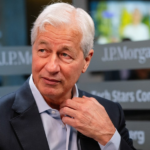Its forecast for profit over the full year was also within range of Wall Street’s estimates, but the jeans and clothing company could simply be facing the challenge of heightened expectations after a big run. Its stock price came into the day with a surge of nearly 42% for the year so far.
All told, the S&P 500 fell 182.60 points to 6,552.51. The Dow Jones Industrial Average dropped 878.82 to 45,479.60, and the Nasdaq composite sank 820.20 to 22,204.43.
Some of Friday’s strongest action was in the oil market, where the price of a barrel of benchmark U.S. crude sank 4.2% to $58.90.
Losses accelerated following Trump’s tariff threat, which could gum up global trade and lead the economy to burn less fuel. Brent crude, the international standard, dropped 3.8% to $62.73 per barrel.
In the bond market, the yield on the 10-year Treasury sank to 4.05% from 4.14% late Thursday.
It had already been lower before Trump made his threats, as a report from the University of Michigan suggested that sentiment among U.S. consumers remains in the doldrums.
“Pocketbook issues like high prices and weakening job prospects remain at the forefront of consumers’ minds,” according to Joanne Hsu, director of the Surveys of Consumers. “At this time, consumers do not expect meaningful improvement in these factors.”
One potentially encouraging signal from the University of Michigan’s preliminary survey said consumers’ expectations for inflation in the coming year edged down to 4.6% from 4.7% the month before. While that’s still high, the direction of change could help the Fed and limit upward pressure on inflation.
In stock markets abroad, indexes fell across much of Europe and Asia.
Hong Kong’s Hang Seng fell 1.7%, and France’s CAC 40 dropped 1.5% for two of the bigger moves. But South Korea’s Kospi leaped 1.7% after trading reopened following a holiday.
___
AP Writer Teresa Cerojano contributed.









